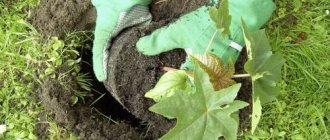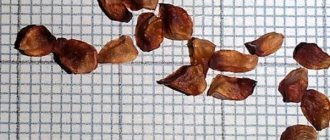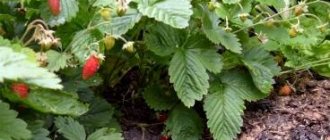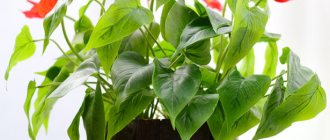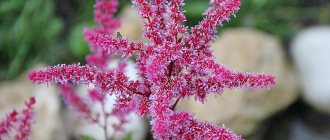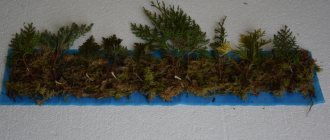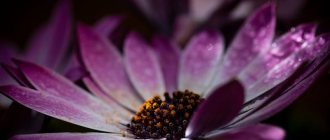The flowering plant Asarina, or Maurandia, is a climbing perennial belonging to the plantain family. However, there are also sources that say that this plant is a representative of the Norichaceae family. This genus includes approximately 15 species. Azarina is originally from California, Mexico and the central United States. But since the 17th century, the popularity of Maurandia began to grow steadily, and this has led to the fact that it now grows in almost every corner of planet Earth. In mid-latitudes, this perennial is grown as an annual plant. It is usually used for vertical gardening.
Azarina flower: description
In Russia, perennial vines are grown as an annual crop. Azarina is a plant from the genus Convolvulaceae, the Norichinaceae family. The curly Azarina is also popularly known as muarandiya.
Liana perfectly disguises shabby walls and unattractive fences
Species description:
- the stem grows up to 5 m long, with pubescence in some varieties;
- leaves are trifoliate, petiolate, heart-shaped;
- peduncles are formed in the axils of the leaves;
- the bud is attached to the stem by a long petiole; there are species with single and racemose inflorescences;
- Azarina flower is tubular, the petals are fused, the diameter of the corolla reaches 6 and sometimes 8 cm;
- fruits, rounded seed pods, are formed in September;
- The seeds are dusty and dispersed by the wind.
Important! Liana sprouts can be seen in the summer at different ends of the site, but they may not bloom until severe frosts. The plant needs to be grown from seedlings.
Disease
Begonia ever-blooming - cultivation and care
Azarina climbing is quite resistant to pests and other diseases. But still the flower can be affected by:
- aphid. For minor lesions, the problem is solved by treating the vine with an infusion of pine needles, garlic or onion peels. This pest is very dangerous, as it sucks out all the nutrients and juices from the plant, the foliage curls, the stem becomes deformed;
- blackleg. The root part becomes dark, softens and breaks. If it severely damages the stem, the bush will have to be removed and everything else treated with potassium permanganate or vitriol. If the disease affects seedlings, then healthy ones must be immediately replanted from the contaminated soil, and the ground must be treated with fufanom or karbofos.
Important! Plants must be inspected daily to avoid damage to neighboring ornamental crops.
Plant varieties
Wisteria - care and cultivation at home
Muarandia differs in the color of the petals and the shape of the gramophones.
Azarina climbing
During the season, the vine grows from 2.5 to 5 meters; in the wild, the perennial rises to a height of 10 meters. The diameter of the corolla is 3 cm. The color varies:
- Mystic Rose produces a bright pink bud and a light tube;
- Bridge's white – white variety;
- Red dragon – scarlet or blood red;
- Sky blue – blue variety.
The delicate buds of the vine are shaped like snapdragon flowers
Azarina prostrate
Features: Triangular leaves with a serrated edge. The bud is large (6 cm), grows on a long petiole with a edge. The length of the yellow gramophone reaches 4 cm. The species is cold-resistant, tolerates frost, and does not fade until snow cover is established.
Azarina antirrhiniflora
It branches strongly, shoots grow up to 1.5 meters. Tubular-bell-shaped flowers grow scarlet, blue, pink and purple, reach a diameter of 3.5–4 cm, and continue to bloom until mid-October.
Azarina Barclay
Prized for its rapid growth. The shoots grow from 3.5 to 5 meters, the leaves are heart-shaped, without pubescence. The buds are large, up to 7 cm. The edges of the petals are contrasting (violet, scarlet or purple). Barclaiana flowers always have a white throat.
Delicate vine buds do not fade in the sun and are preserved until late frosts
Azarina blushing
The peculiarity of the azarina erubestens liana is its velvety heart-shaped leaves up to 8 cm in size. The flower independently rises along a support up to 1.2 meters. The length of the buds is 7 cm, width is 4 cm. There are dark spots on the throat of the pink flower.
Azarina purpusa
The liana is highly branched, the length of the side branches is up to 40 cm. Pale carmine or soft purple funnel-shaped gramophones grow up to 5 cm long, 3 cm in diameter.
Azarina visletsena
The flowers are large, pale purple or blue.
Azarina climbing - Mexican beauty
The climbing azarina , Asarina scandens or Asarina semperflorens, is native to Mexico. This is the most common species of the Azarina genus, a member of the Plantain family.
In some sources the plant can be found under the name Maurandia or in Latin Maurandia.
As the name suggests, Asarina climbing is a climbing vine. Under favorable conditions, its shoots can stretch up to 7 meters in length. The plant is very decorative.
It has thick, velvety, heart-shaped foliage, against which tubular flowers bloom, looking like delicate “gramophones.” They are small in size but very bright.
Many varieties of climbing azarina with various flower colors have been bred:
- "Red dragon" - red-pink
- "Sky Blue" - bright blue
- "Mystic Rose" - pink
- "Joan Loraine" - violet-blue
- "Bridge's White" - snow-white
Another advantage of climbing azarina is its versatility. Most often it is used for vertical gardening of arches, fences, walls, gazebos and balconies, using support.
However, if the vine is planted in a large hanging basket or on an artificial hill, it will turn into a luxurious hanging plant. There is also a third option for using the amazing azarina - ground cover cultivation. In two weeks, the vine can cover a 1 square meter plot of land with a continuous carpet of greenery.
Growing a plant from seeds
For early flowering, varietal azarina is sown at the end of April, inflorescences appear after 4 months.
Sowing
Dipladenia (Mandevilla) - growing and care at home
The seeds are scattered on moistened soil (you can use universal soil), sprinkled with a layer of up to 1 cm. Germination will take a month and a temperature above 23 degrees. The soil is moistened by spraying every 4 days.
Seedling care
The sprouts sprout after the appearance of the 3rd leaf and deepen the stem to form additional roots. After 2 weeks, feed with complex fertilizers for indoor plants.
Note! Illumination with diode lamps will help to grow strong plants.
Features of care, frequency of watering
Azarina does not like the cold, so it is planted in open ground when it gets warmer. To ensure Maurandia blooms profusely, choose a flowerbed on the south or east side for planting. Before planting, loosen the soil, add peat (if the soil is dense), and lay drainage at the bottom of the hole. The first days after planting, it is necessary to cover the seedlings so that they get used to direct sunlight. Experienced gardeners know that any seedlings need to be “hardened off”. Caring for a plant in open ground is not difficult:
- loosen the soil;
- remove weeds;
- apply fertilizers.
Attention! For bushiness and the formation of a larger number of shoots, and therefore more abundant flowering, it is necessary to pinch the tops of the shoots.
Watering is carried out depending on natural conditions. Until the roots are strong, you need to water them little by little and often. During prolonged drought, watering is carried out twice a day: in the morning and in the evening. The water should be warm and filtered.
Planting azarina in open ground
For climbing azarina, reverse frosts and cold soil are terrible when grown. Choose well-lit areas, closed on the north side.
When to plant
Climbing indoor plants and hanging vines
The seedlings are transferred to open ground when the ground warms up to 10 degrees. Before this, the shoots are hardened off - taken out to a cool place for several hours.
How to plant
The recommended spacing for planting is 60 cm. It is worth noting that varietal azarina, whose vines do not climb very intensively, needs support or garter.
Note! The liana is also planted in flowerpots and hung on the edges of the gazebo. In this form, the plant is brought into apartments for the winter and used again for decoration in the spring.
How to care for azarina
The planting site is chosen to be open, sunny, protected from the wind. In summer, on days of scorching sunlight, it is recommended to shade the plant. The soil needs to be fertile, neutral acidity, loose, with good drainage.
Long horizontal shoots need vertical support.
Watering
Twice abundant watering is needed only during periods of drought; then the plant can be sprayed with warm water. On other days, you need to water only after the soil has dried five centimeters.
Top dressing
Fertilizing is carried out starting from the moment the flowers appear. Complex mineral fertilizer is used once a week in alternation with organic matter. Usually chicken manure dissolved in water is used.
Trimming
Pruning involves removing faded flowers.
The soil
Loosening the soil and weeding are also used. Mulching with peat is also welcome. In winter, the plant is brought into a warm room, or a new one is planted next spring.
Caring for a flower in the garden
The flower responds well to loosening and complex fertilizing. They are carried out at two-week intervals throughout the entire cultivation. You need to regularly weed the ground and free it from weeds.
Important! Moisture is retained by mulching the soil with peat or humus after watering.
How to water a plant
Liana loves water; buds and leaves quickly droop if not watered enough. In dry weather, the plant is moistened early in the morning by sprinkling.
A cutting of an azarina you like can be separated from a plant growing in the garden and grown in a pot as an indoor flower for up to 10 years.
Reproduction
You can preserve the species you like without seeds; the plant is propagated by cuttings. They are taken from wintering vines at the end of February and rooted within a month. Flowers on such seedlings appear in June.
Planting and propagation
An adult plant of azarina vine produces quite a lot of young shoots, which are easily dug up and transferred to another place. Along with the shoot, you should take a sufficient lump of earth to keep the root system intact.
To obtain a good thick green cover, planting the climbing azarina in moist soil, at a distance of at least 0.5 m from each other. The soil must be covered with a layer of peat or cut grass.
Liana propagation is carried out in two ways: seeds and vegetatively. In order for azarina to begin to bloom on time, you should correctly calculate the time to start sowing seedlings.
Growing a flower from seeds
If you want to get a blooming green “wall”, sowing seeds for seedlings should be done in early to mid-February. If sowing is done later, the flowering period may be very short.
The process of growing Asarina climbing from seeds requires a lot of time and patience. To begin with, prepare a loose earthen mixture: sand, peat, humus, and turf soil are mixed in equal proportions. After this, the earth is well calcined in an oven at high temperature, then laid out in containers and well poured with a hot, strong solution of manganese. Before direct sowing, the soil is moistened.
The seeds are laid out in containers with soil in an even layer, lightly pressed down, sprinkled with a 1 cm layer of calcined cooled sand, moistened and covered with a lid, glass or polyethylene. The temperature of the growing room should not exceed +15°C. Every day the lid is removed for ventilation. Under these conditions, the first shoots will appear after 14 days.
As soon as the seedlings have two true leaves, the young shoots are planted in separate containers. From this moment on, care is carried out as for an adult plant.
When grown by seeds, climbing azarina is transplanted into open ground 3 months after the seeds germinate, mainly at the end of May, when the possibility of night frosts is excluded.
Growing in open ground
Propagation using cuttings reduces the growing time of the vine. Compared to the seed method, the vegetative method allows you to get a flowering plant much faster.
In winter, fragments of shoots, about 20 cm, are cut off from an adult vine and placed in a container with water or a peat-sand mixture. In this state, the cutting will soon give roots, which will allow you to quickly replant its individual pots. With the arrival of warm weather, the cuttings are planted in open ground.
Preparing for winter
Potted plantings are brought into a winter garden or apartment and provide greenhouse conditions. Winter care is not much different from summer care. During the dormant period, the stems lengthen and budding in the plant stops for a short time. At this time it is convenient to prepare cuttings for spring planting.
Azarina will delight you with flowering for a long time with proper care
Flowering vines are tied up on the fence and secured against the walls. The beautiful buds are loved by bees and other insects. Muarandiya (azarina) will be an excellent choice for decorating any site.
Diseases and pests
The advantage of azarina is that it is mostly disease resistant, so even a novice gardener will find it easy to care for. However, if not properly cared for, azarina may suffer from blackleg. This is a fungal disease that appears on young and weakened specimens. It manifests itself by blackening of the root collar, which often leads to the death of seedlings. The cause of the disease is as follows:
- dense planting;
- excessive watering;
- through too early sowing;
- keeping on a cold windowsill;
- poor room ventilation;
- sudden changes in temperature and humidity.
Know! Blackleg practically does not attack specimens grown in peat tablets, since they are sterilized and treated with fungicides before sale.
But if planting is done in a prepared substrate, then it must first be disinfected by steaming or a solution of potassium manganese. If young plants are affected, the diseased specimens are removed and the rest are treated with chemicals. In adults, all damaged areas must be removed, and the remains must also be treated with chemicals. Like most garden crops, it can be attacked by colonies of aphids or spider mites.
The following folk remedies will help in the fight against aphids: regular showers, infusion of marigolds, infusion of dissected hogweed, infusion of white mustard powder, from common dope, tomato tops, infusion of tobacco, decoction of garlic or onion, solution of wood ash, from alcohol and soap solution, infusion hot pepper, diluted citrus juice.
Aphids breathe through the skin, so they cannot tolerate strong odors, so the following remedies will also help in the fight: cigarette smoke, pelargonium decoction, kerosene, flea drops, non-chemical preparations containing oil. It is worth remembering about the natural enemies of aphids - the ladybug and its larvae.
Know! You can attract it to the site by planting fragrant plants, for example, dill or angelica.
The appearance of spider mites can have a detrimental effect on vines. As a preventive measure against the pest, use regular watering and spraying of leaves and inflorescences. This is due to ticks intolerance to high humidity. You can get rid of parasites using the same folk remedies that are used against aphids. You can also use decoctions from:
- cyclamen;
- dandelion roots;
- Persian chamomile.
To safely get rid of harmful insects, you can use natural enemies - phytoseiulus and amblyseius. These predatory insects feed on eggs and the mites themselves. You can purchase them in specialized stores or on the Internet.
Of course, chemicals that are sold in any gardening store will also help against both pests. Such substances are used several times, about a week apart, since they do not affect insect eggs. The main thing when using them is to follow the dosage.
How to plant climbing azarina: features of growing from seeds
Decorative landscaping with beautifully flowering vines has long been a favorite method of decorating suburban garden plots. Moreover, they can grow well near fences and outdoor gazebos, reaching with their tenacious tendrils all the way to balconies and attics. Azarina, a native of Mexico, a vine with unusually delicate leaves and a scattering of flowers, is recognized as one of the most beautiful.
Like all exotic plants, it does not overwinter with us, but it feels great as an annual plant if you approach its cultivation and care correctly.
Description
In its homeland it is a perennial that reproduces by self-sowing, but in our region it is known as a well-established liana. It can reach a height of up to three and a half meters in just one summer season, and its leaves resemble the familiar home ivy.
Small tendrils grow from the axils of the leaves, which can cling to any surface roughness, so this plant looks especially decorative when used vertically.
The flower stalks are tubular, consisting of 5 multi-colored petals, depending on the variety, from boiling white to blue-lavender shades.
And if you take care of early planting of seeds for seedlings, you can see a flowering vine by mid-June, and the whole plant will be pleasing to the eye before the onset of frost.
How and when to plant
The flowering vine has one characteristic feature - up to five months can pass from the beginning of germination to the moment of flowering, so experienced flower growers sow the seeds of climbing azarin at the beginning of February.
Sowing should begin with careful preparation of the soil - the soil should be loose, with a large proportion of fertile composition. This can be part of humus, river sand, peat and soil from your own garden.
Don’t forget to heat the soil in the oven at high temperature to get rid of pathogenic microflora. But you can also use purchased soil, but do not forget to treat it against pests with any fungicidal preparation.
And only after a day you can start planting seeds:
- In containers filled with earth, the seeds are simply scattered over the surface and pressed down a little with a special tool;
- Sand, previously calcined and cooled, is poured on top;
- Cover the container with thin glass or film and move it to a bright and warm place. Periodically remove the cover for ventilation; But this information will help you understand which arcs are best for a greenhouse.
- After 14 days you can wait for germination.
If you notice plants infected with blackleg, remove them immediately to avoid infecting other seedlings. The soil must again be shed with a fungicide or a solution of potassium permanganate, and sprinkled with charcoal powder.
After the true leaves appear, we plant the seedlings in separate pots and install a support for each plant.
A little trick: in order to form more side shoots, pinch the top after the 5th true leaf.
If you follow all the prescribed agricultural techniques, then seedlings will appear only at the end of 2 weeks, this time is allotted for stratification of the dense shell of the seed, and the ambient temperature should not fall below 18-20 degrees Celsius.
If during this period the seedlings have not sprouted, then the box with seedlings is placed on the bottom shelf in the refrigerator for additional stratification for about 6 weeks, and then again placed in a warm and well-lit place where the night temperature does not fall below 15 degrees.
After the true leaves appear, small plants are planted in separate containers, but be sure to install a support in it. You can use metal utility containers for your dacha. And as soon as the threat of night frosts has passed, they can be transplanted into open ground in a pre-selected location. Flowering can be expected in early to mid-July.
If there are conditions for winter storage, for example, a warm vegetable cellar, then you can dig up the plants and replant them in pots, and store the plants there throughout the winter. For storage, you can use polycarbonate conveyor greenhouses. But this method is only suitable in a warm room. And already in early spring you will be able to admire the abundant flowering of azarina.
But! Before putting the plants away for the winter, it needs to be shortened, and the cut stems can be used for cuttings to get more new young plants in the spring. In addition, such plants will differ in the thickness of the stems and the abundance of peduncles.
Read more about the seedling method of growing
Well-grown plants can be planted in open ground after a period of frost:
- Choose a place that is well lit and protected from winds. Prepare the planting holes - make drainage and loosen the soil properly;
- Make the holes at a distance of about half a meter from each other.
- Azarina can also be planted in separate pots or flowerpots, using an ampel pattern, having prepared light and non-alkaline soil. Flowerpots can be about 20 cm high, plants are planted at intervals of 30 cm from each other. Then you should install the support and carefully tie the first lashes to it.
- As soon as the plants get stronger and grow, the support can be removed and the vine can be hung down, evenly distributing the stems.
But how to plant ornamental cabbage correctly, and how to do it correctly, is indicated in the contents of this article.
But how to properly sow Salpiglossis seeds, you should follow this link.
Maybe
Azarina
The flowering plant Asarina, or Maurandia, is a climbing perennial belonging to the plantain family. However, there are also sources that say that this plant is a representative of the Norichaceae family. This genus includes approximately 15 species. Azarina is originally from California, Mexico and the central United States. But since the 17th century, the popularity of Maurandia began to grow steadily, and this has led to the fact that it now grows in almost every corner of planet Earth. In mid-latitudes, this perennial is grown as an annual plant. It is usually used for vertical gardening.
Features of azarina
The climbing azarina has highly branched shoots, the length of which is 3–7 meters. The shoots cling to the support thanks to thin twisting petioles. Small, bright green, velvety or bare leaf blades that can be serrated or entire. Their shape is rounded-triangular, the base is heart-shaped, and the apex is pointed. Tubular large axillary flowers are solitary; they are located along the entire shoot, right up to its top. The most common colors of flowers are pink, violet and purple; not so often they can be yellow or white. Plants with bicolor flowers are very rare. Azarina blooms in the last days of June, and the end of flowering occurs in September. The fruit is a capsule containing 2 cells, inside of which there are small pointed seeds.
Growing Asarina climbing from seeds
Sowing
Azarina climbing, as a rule, is grown through seedlings. In order for flowering to begin as early as June, the seeds must be sown in winter approximately 2.5–3 months before transplanting the seedlings into open soil. To sow seeds, use an earth mixture consisting of sand, humus, peat and leaf soil (1:1:1:1). This soil mixture needs to be disinfected, for this it is left for 10 minutes. placed in a microwave oven, which is turned on at full power. Then the soil is spilled with a strong solution of potassium manganese, which should be very hot, after which it should be allowed to rest for 24 hours.
The container is filled with loose, damp earth mixture. The seeds should be distributed over its surface, lightly pressed into the substrate and sprinkled with a half-centimeter layer of calcined sand. The crops must be watered from a sprayer. The container should be covered with glass or film and put in a cool place (from 15 to 20 degrees), and do not forget to ventilate the crops every day, removing the shelter for 2–3 hours. If after 1 month the seedlings still have not appeared, the crops are transferred to the cold for 30 days, and then again placed in heat.
Growing seedlings
When the first seedlings appear, the shelter will need to be removed, and the container should be moved to a well-lit place. Picking is done after the plants have formed 2 or 3 true leaf blades; for this, individual peat pots are used.
Transplanted plants need to be systematically watered and provided with good lighting. When 1.5 weeks have passed since picking, the plants will need to be fed with a solution of complex mineral fertilizer, for example, Ideal. After another half a month, the plants are fed with Agricola solution. Further feeding will directly depend on the growth and development of the plants. If the growth of azarina is rather slow, then it is necessary to fertilize it with phosphorus and potassium, and if the plants have very small or faded leaves, this means that they need nitrogen.
Before planting azarina in open soil, it should be hardened for two weeks. Every day, seedlings should be moved outside, and their time spent in the fresh air should be gradually increased until they fully adapt to the new conditions.
Planting climbing azarina in open ground
What time to plant
Azarina seedlings are planted in open soil only after the threat of return frosts has passed, and this time, as a rule, occurs in the second half of May. This plant loves warmth very much, so the site chosen for planting should be sunny and have good protection from cold winds and drafts. It should be taken into account that at noon, when the sun is most active, such a flower needs shading. It is best if the soil is breathable, loose and well-drained. Loamy, neutral soil is ideal for growing azarina.
How to plant correctly
In order for the bushes to grow and develop well, they need an area of at least 0.6 m. In this regard, a distance of 0.6 m should be maintained between the holes. During planting, you also need to install a support; a mesh made of metal with medium-sized cells or vertically stretched metal wire. Plants that have become stronger and established must be tied to a support.
Azarina care
Azarina loves moisture very much, so on hot, dry days in the summer she needs to be provided with watering 2 times a day (in the evening and morning). During watering, it is also recommended to moisten the foliage of the plant with a spray bottle using boiled lukewarm water. The soil around the bushes must be systematically loosened, while pulling out all the weeds. To significantly reduce the number of watering and weeding, the surface of the area should be covered with a layer of peat.
The plant needs systematic feeding. In order for the plant to bloom for a very long time after the first flowers appear, it will be necessary to start fertilizing with complex mineral fertilizer, which mainly contains phosphorus and potassium. Such fertilizing is carried out once every 1–1.5 weeks. You can also use a solution of chicken manure for fertilizing. To ensure long flowering, do not forget to promptly pick off flowers that have begun to fade.
Diseases and pests
Azarina seedlings can become infected with root collar rot or blackleg. As a rule, plants become infected from the moment sprouts appear until the development of 2 or 3 true leaf blades. In an infected plant, the root collar becomes dark and a black constriction appears on it. After a few days, the shoot in this place becomes soft and breaks, causing the seedling to lie down. Once it turns out that the plants are infected, you need to immediately transplant healthy seedlings into a fresh, well-disinfected soil mixture. They are placed in a warm place, protected from direct sunlight. Irrigation water should be mixed with a fungicide (Baktofit, Maxim or Fitosporin), do not forget to read the instructions first. Infected plants must be destroyed.
The greatest danger to azarina in the garden is aphids. This insect sucks plant sap from leaves, flowers, shoots, buds and buds. As a result, the entire above-ground part of the plant becomes twisted and deformed. Also, sooty fungus may appear on the plant due to the sugary secretions of aphids. To destroy such a pest, insecticides are used, for example: Karbofos, or Fufanon, Akarin, Bankol or Actellik. To completely get rid of aphids, the plants will need to be sprayed with insecticide again 1–1.5 weeks after the first treatment.
Types and varieties of azarina with photos and names
Asarina scandens = Asarina semperflorens = Usteria scandens
This species is most often cultivated by gardeners. Its detailed description can be found at the beginning of the article. The most popular varieties:
- Bridges White . The color of the flowers is white.
- Joan Lorraine . The flowers are dark purple.
- Mystic Rose . The color of the flowers is deep pink.
- Red Dragon . The flowers are painted scarlet or red-bloody.
- Sky Blue . The medium-sized flowers are blue.
Asarina procumbens = Antirrhinum asarina
This species is native to the northeastern part of Spain and southwestern France. The most common variety of this species is Sierra Nevada. In such a plant, the horizontally spread stems are fleecy. The length of the pale green triangular leaf plates with a jagged edge is about 6 centimeters; they have long petioles, on the surface of which there is pubescence. The length of the tubular flowers is about 40 mm, their color is soft yellow. This flower is not afraid of short frosts of no more than minus 15 degrees.
Asarina antirrhiniflora
The length of stems of this type can vary from 150 to 250 centimeters. The shape of the small leaf blades is heart-shaped. The flowers are tubular elongated bells, reaching 30 mm in length; their color can be sky blue, pale purple, deep red or white. There are spots on the surface of the pharynx. The plant blooms at the beginning of the summer, and flowering ends with frost.
Asarina barclaiana
The homeland of such a branched vine is Mexico. Its length is about 350 cm. The heart-shaped leaf plates have a pointed tip. The length of the bell-shaped flowers is 70 mm. Their color can be pink, raspberry or purple. The pharynx is always painted in lighter shades.
Asarina erubescens
The length of the stems of such a creeping flower reaches 350 cm, while on the support it can rise to a height of no more than 120 cm. The length of the velvety, heart-shaped leaf plates is about 8 centimeters. The flowers are approximately 70 mm long, tubular in shape and light pink in color. There are spots on the surface of the white pharynx.
Azarina purpusii (Asarina purpusii)
This flower has many spreading thin shoots, the length of which is 0.3–0.4 m. The heart-shaped leaf plates reach 50 mm in length and have a sharp tip. The shape of the flowers is funnel-shaped, the length of their tubes is 50 mm. Their color is carmine or pale purple.
